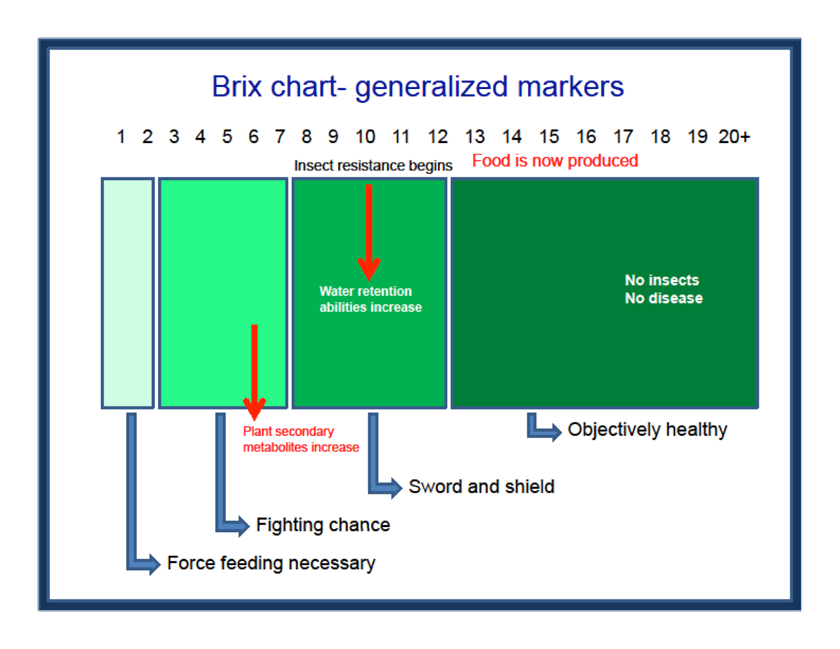Energy / Physics
to one that is alive, efficient and resilient to stress. We have implemented the ABCs of Soil Health to assist with the process of regaining soil function.
Each step is essential in restoring the soil’s ability to grow healthy crops.
Energy, from all different sources, is required in consistent levels during the plant's growth cycle. Energy levels that are too low result in delayed plant growth, poor quality produce and reduce the plant's ability to fight disease, weeds and insects. Excess levels of energy will result in plant tissue damage, stunted growth and ultimately death.
Creating an environment that can collect and contain energy is essential to growing healthy crops, sustaining soil life and building resilience in the soil.
We measure the soil energy by monitoring the soil conductivity. Plants seem to grow best when the energy is above 250 ERGS in the soil and less than 1200 ERGS. Of course different species will require more or less for optimal growth and production. Soil microbes play a huge role in the containment of the energy in the soil as well as the level of humus and organic carbon reserves.
Photosynthesis
Plants main function is to produce sugar through the process of photosynthesis. The higher the sugar content the more energy is stored for plant metabolism, and to feed and support the soil microbes colonized around the roots. We measure the Brix levels of the plant with an instrument called a refractometer. Sugar readings should be at minimum 7 degrees of Brix and upwards to over 20 degrees Brix (depending on the plant). The follow chart was developed by Dr. T. Dykstra, Gainsville, Florida...

Developing strategies and farming practices to enhance the soil microbial population and support the photosynthesis in the plant will aid in the management of energy.
